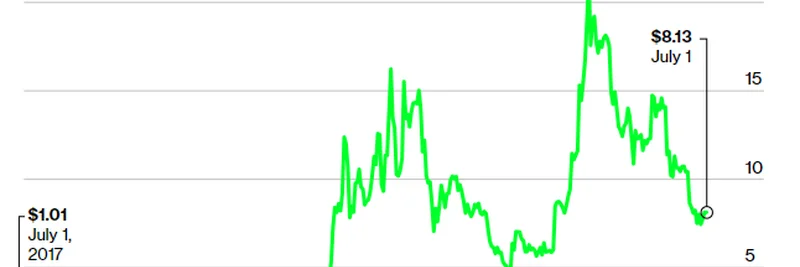Back in 2018, EOS made headlines by raising a staggering $4.2 billion in its initial coin offering (ICO)—the largest ever. It positioned itself as a superior alternative to Ethereum, boasting better scalability and efficiency. But four years later, many are left wondering: what really happened to EOS?
Let's break it down step by step, starting from its origins.
The Birth of EOS and Its Ambitious Promises
EOS was spearheaded by Block.one, led by CEO Brendan Blumer and CTO Dan Larimer, who had previously founded projects like Steemit and Bitshares. The ICO funds were meant to develop tools to accelerate the adoption of EOS technology, promising a blockchain that could handle more transactions faster than Ethereum's proof-of-work system.
The sale was a marketing triumph, but controversies emerged almost immediately.
Early Controversies and Regulatory Scrutiny
From the get-go, EOS faced legal hurdles. The U.S. Securities and Exchange Commission (SEC) fined Block.one $24 million for conducting an unregistered ICO. Investors also sued, alleging misleading statements about the EOS token that violated securities laws.
A research paper accused Block.one of artificially inflating the EOS price during the ICO. Allegedly, they recycled Ethereum from the crowdsale wallet to buy back EOS tokens, creating artificial demand and FOMO (fear of missing out) among investors.
Here's a look at how the EOS price surged during the crowdsale, jumping from an initial $1 to $8.13 by the close.
Broken Promises on Ecosystem Support
Block.one promised to invest $1 billion from ICO proceeds into the EOS ecosystem via EOS VC, aiming to nurture startups and blockchain growth. However, critics argue these funds were diverted to unrelated ventures.
The token purchase agreement gave Block.one broad discretion over the funds. In 2021, they launched Bullish, a cryptocurrency exchange valued at $9 billion pre-launch, built on a private EOS blockchain. Today, Bullish lists only six tokens with a 24-hour trading volume of around $168 million.
Brendan Blumer also acquired a 9.3% stake in Silvergate Capital, a crypto-friendly bank now under scrutiny for its ties to FTX. Block.one added another 7.5% stake.
Another venture, Voice—a social media platform—cost $150 million to build, including $30 million for the domain from MicroStrategy's Michael Saylor. It shut down after a year and relaunched as an NFT marketplace in 2021, with the $VOICE token still pending.
A former employee revealed internal frustrations, claiming Block.one was more focused on marketing the token than building sustainable software.
Centralization Concerns
EOS uses delegated proof-of-stake (DPoS), where token holders vote for 21 block producers (BPs) to validate transactions. This allows for higher scalability—faster transactions—but at the cost of decentralization.
Shortly after mainnet launch, BPs froze 34 accounts suspected of holding stolen coins without explanation, raising alarms about centralization. Major exchanges like Binance, OKX, and Bitfinex are among the top BPs.
Current State: Struggling Ecosystem
Today, EOS's total value locked (TVL) is a modest $82 million, with only five dApps exceeding $1 million in deposits. It fares better in gaming, with Upland boasting 77,000 weekly users, but even there, it trails WAX—a fork of EOS.
Developer activity has dwindled, with new repositories per month flatlining compared to other chains.
Glimmers of Hope for the Future
Despite the setbacks, the EOS community isn't giving up. Last month, the EOS Network Foundation, led by Yves La Rose (aka Big Beard Samurai), launched a $100 million ecosystem fund.
Additionally, EOS EVM is set to launch early next year via Trust EVM, promising Ethereum compatibility with EOS's high throughput and low costs.
In the end, EOS's success now hinges on its community, as Block.one seems focused elsewhere. What do you think lies ahead for EOS? Share your thoughts in the comments below.
For more insights into blockchain and meme tokens, stay tuned to Meme Insider.


